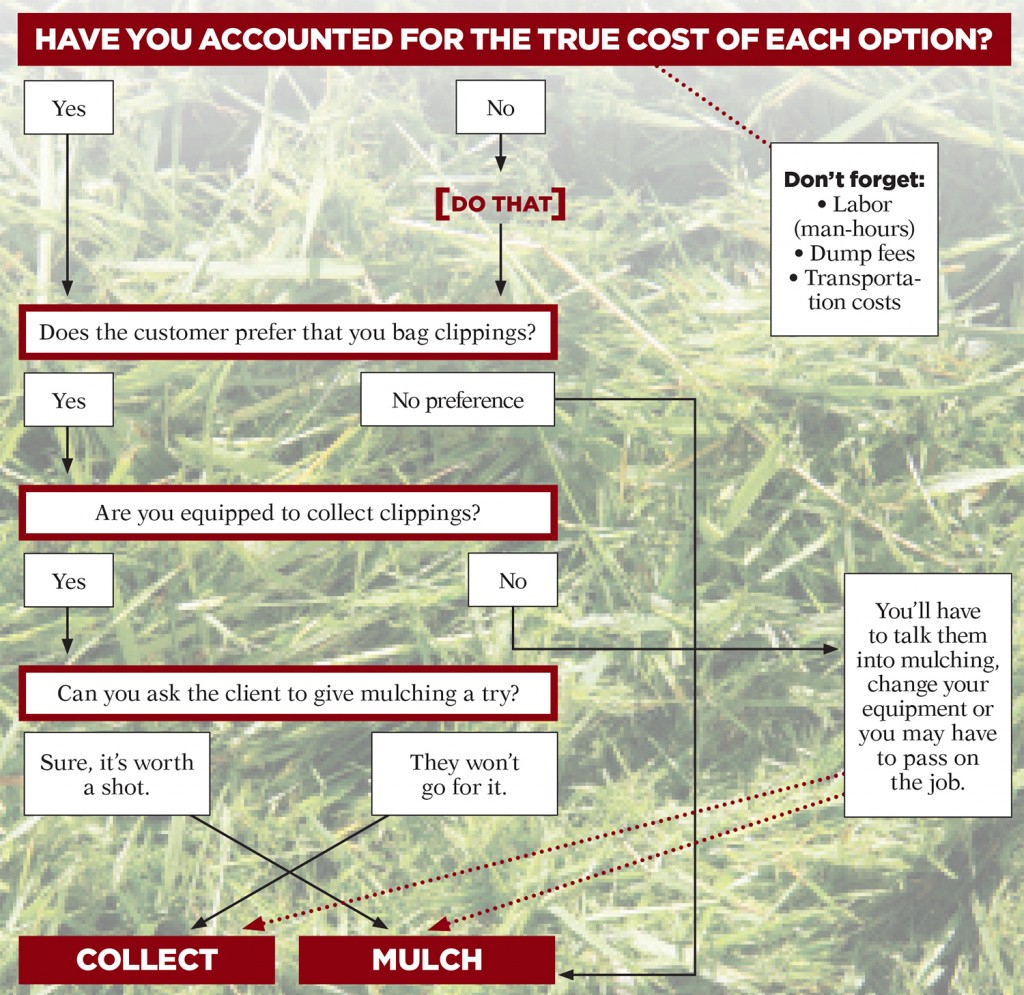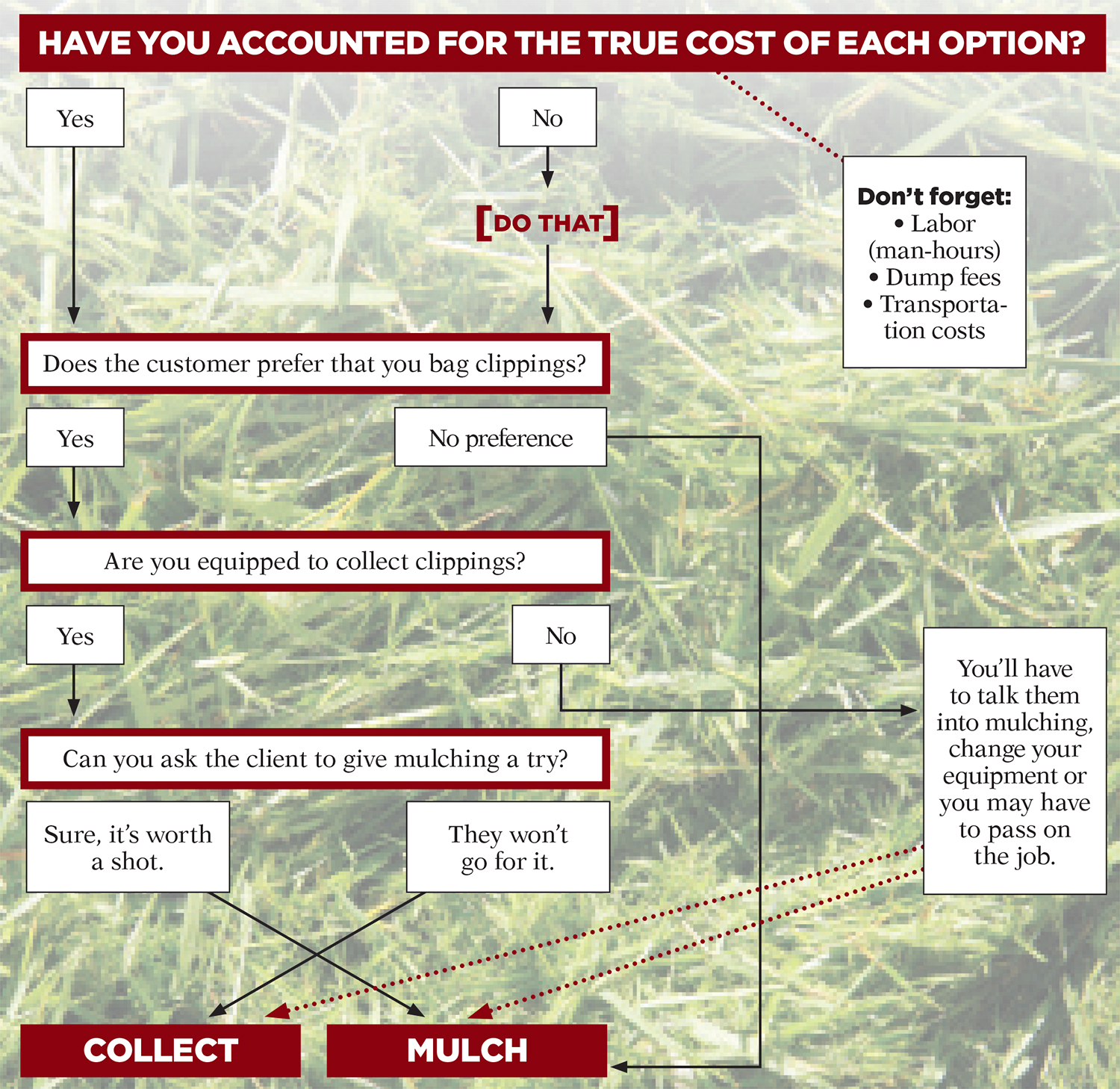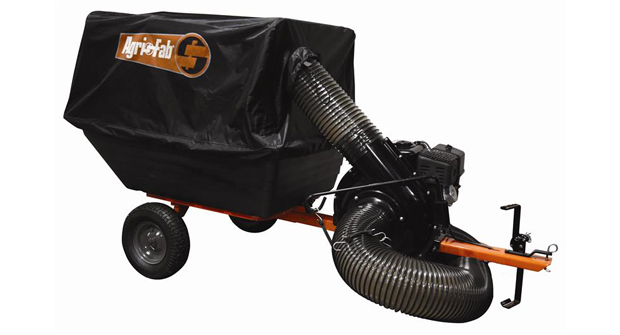Despite evidence that leaving lawn clippings is good for turf, landscape companies sometimes face the mulch-or-bag question. Walk through the options here.

If you do collect…
There are many benefits to leaving clippings on the lawn.
For example, mulching returns essential nutrients, such as nitrogen, back to the soil, says Mark Schmidt, principal scientist for John Deere.
But sometimes bagging is a contractor’s only option based on client requirements.
“Bagging is very important for contractors concerned about lawn care aesthetics, as collection systems work lawns like vacuum cleaners for your carpet, removing and storing clippings as the mower moves along, leaving a nice freshly cut lawn,” says Ron Scheffler, product manager for mower manufacturer BOB-CAT. Collection systems also may improve striping patterns and are a benefit for companies that operate in areas where lawn debris, such as pine needles, can be difficult to mulch or when fall leaf season rolls around, he says.
Regardless, experts agree lawn clippings, when bagged, should be kept out of landfills.
“If you do decide to bag, be sure to compost your clippings and reuse on site,” Schmidt says.
The nitrogen in clippings is a valuable addition to compost, according to Colorado State University’s extension office.
Another option is to dump clippings at a composting facility vs. a landfill.
Sources: Colorado State University Extension; Ron Scheffler, product manager, BOB-CAT; Mark Schmidt, principal scientist, John Deere


